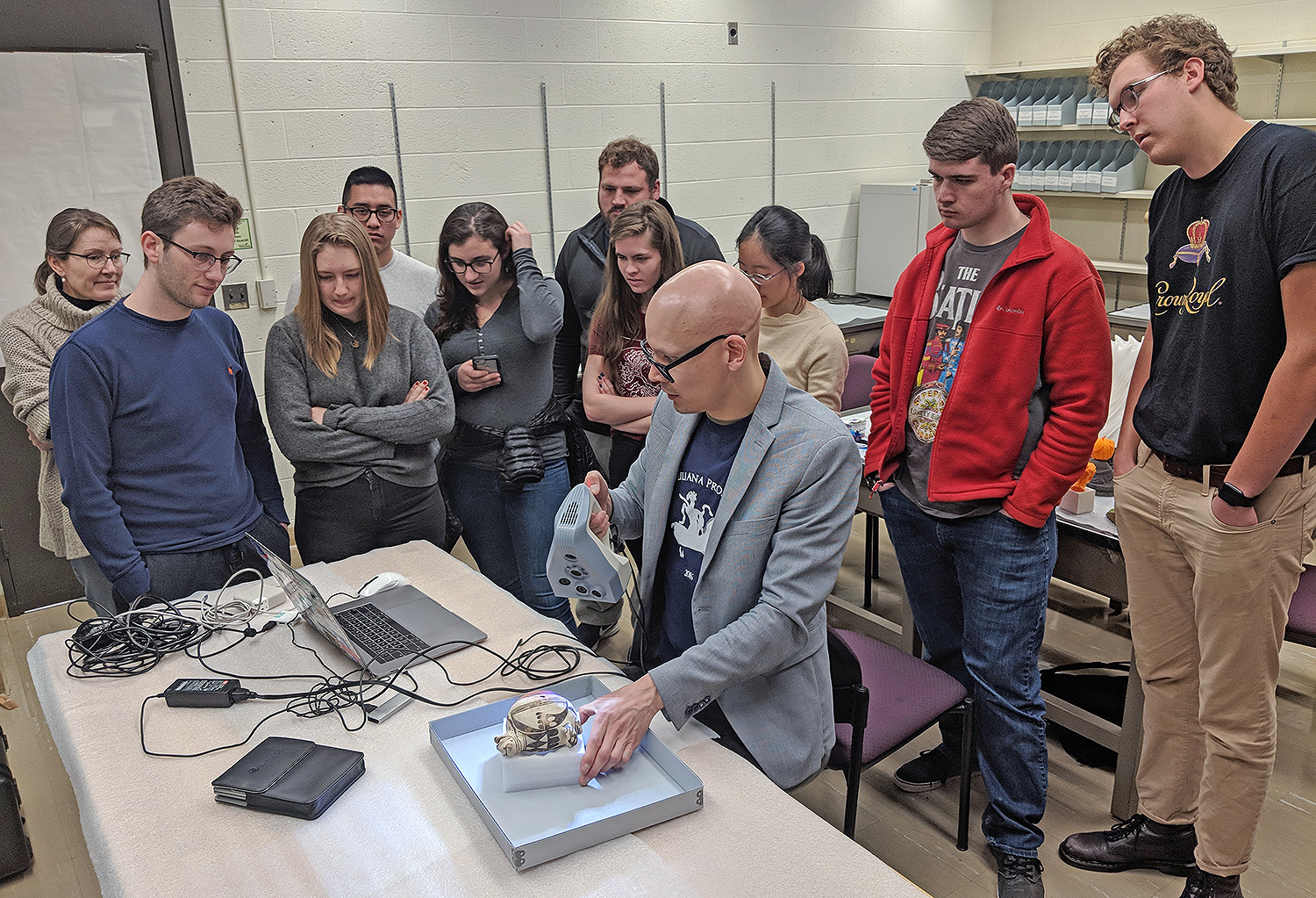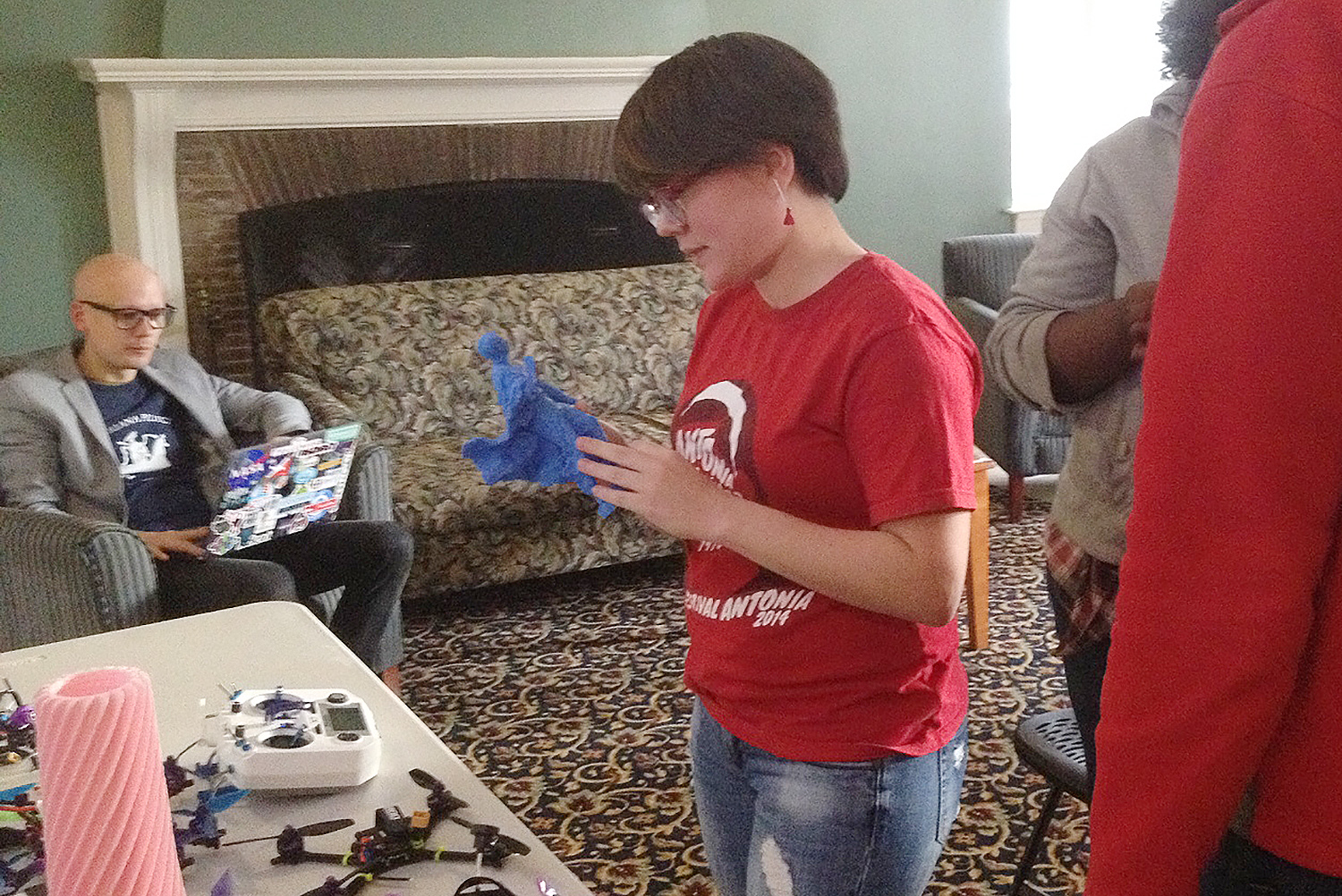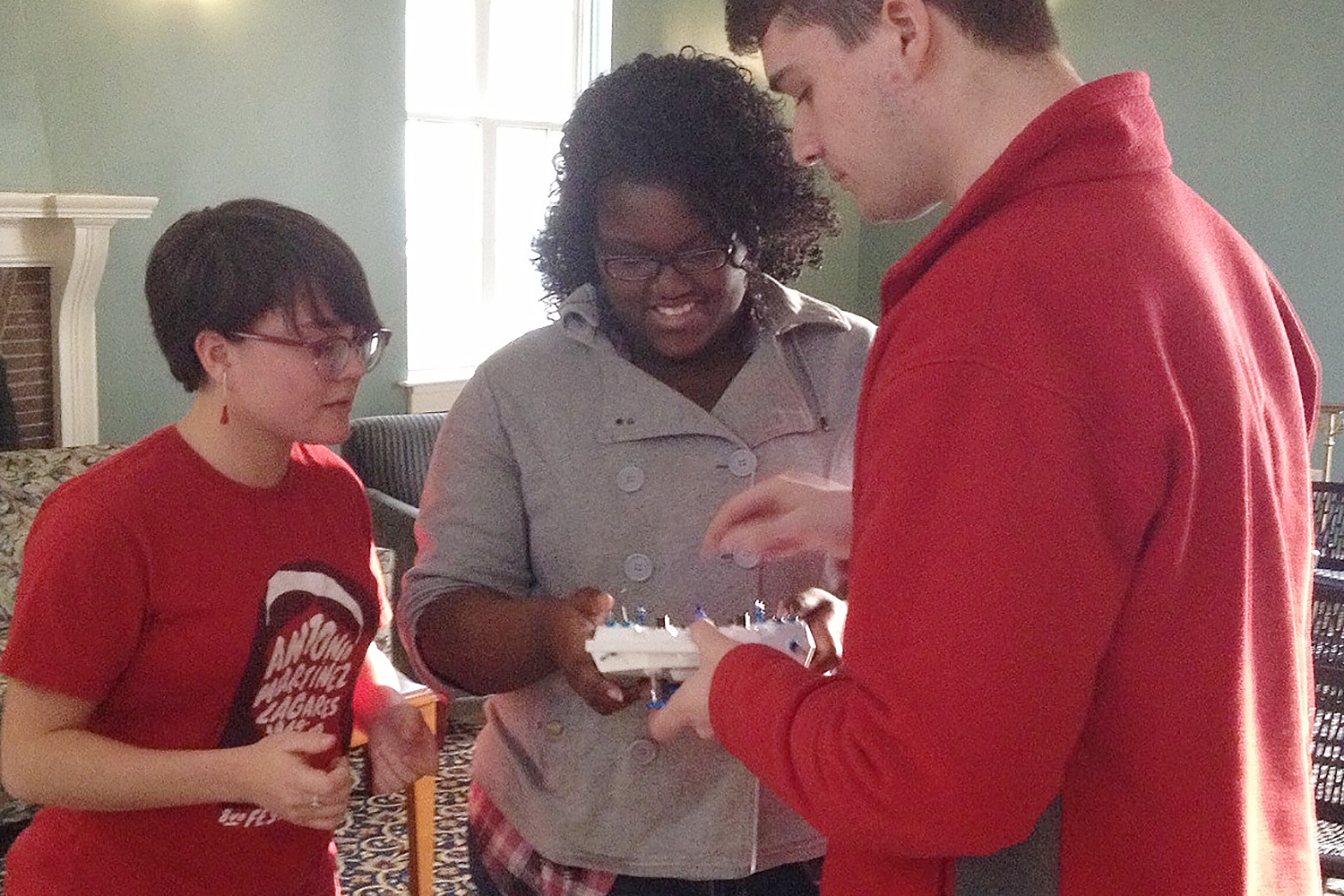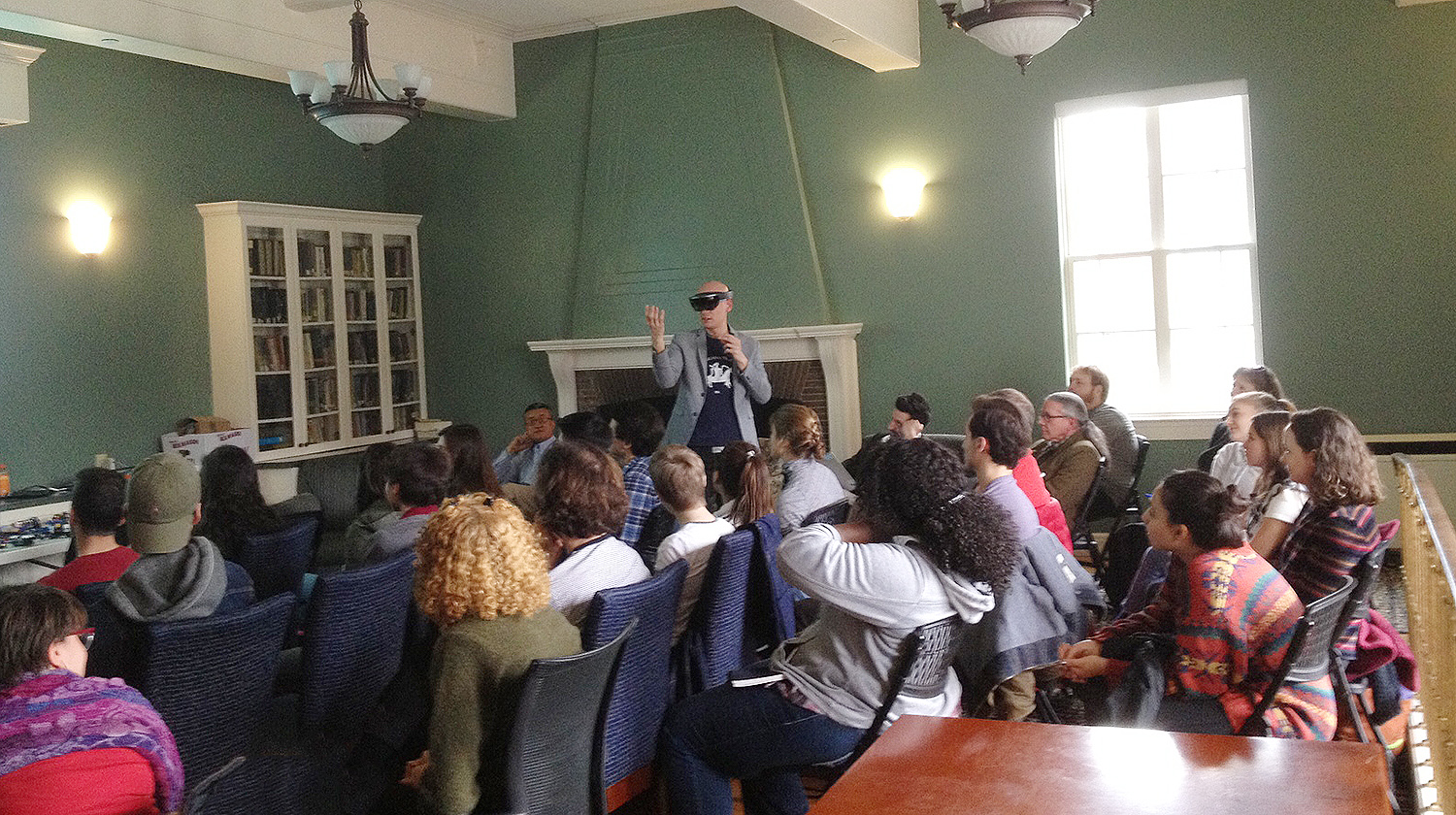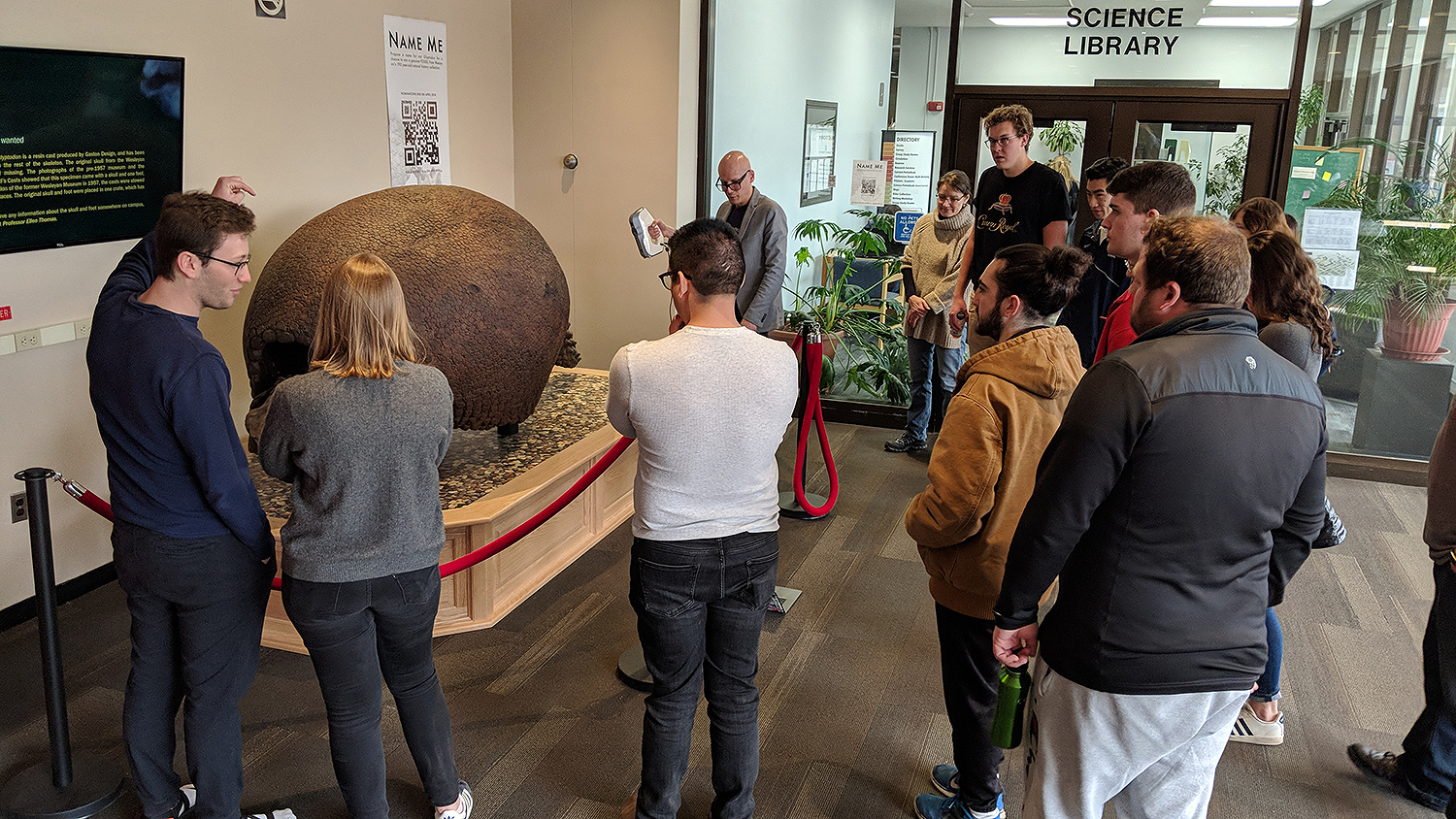Students Learn about New Technologies Being Used to Study the Past
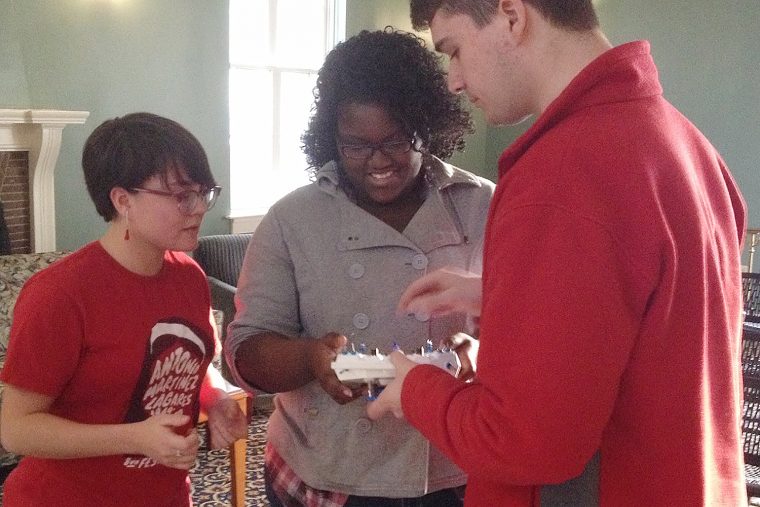
On March 28, the Archaeology Program and the Department of Classical Studies invited Ian Roy of Brandeis University to Wesleyan to discuss ways new technologies are used to study the past. Roy is the founding head of Brandeis MakerLab and director for research technology and innovation at Brandeis University’s library.
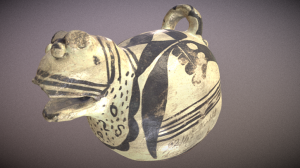
Roy first visited the Archaeometry: How to Science the Heck out of Archaeology class taught by Andrew Koh, visiting assistant professor of archaeology. There, he demonstrated how to scan objects in 3-D using an Artec Space Spyder, a tool that uses structured light to capture incredibly high-resolution scans of objects. The class produced multiple models of artifacts, including a vessel that has since been posted to Sketchfab.
“What’s so amazing is that these are just quick versions made in only 15 minutes, without any post-processing and touch-ups,” said Kate Birney, assistant professor of classical studies, archaeology, and art history.
Roy also spoke about emerging technologies in archaeology to Birney’s Art and Archaeology of the Bronze Age Mediterranean class and interested Wesleyan faculty. Roy explained how new scanning processes can be used to re-create ancient sites and objects as 3-D prints, or in augmented and virtual reality environments.
Students took turns trying on HoloLens goggles to see and interact with Bronze Age artifacts from Crete in augmented reality, and even to try their hands at flying some of the small drones used for on-site image capture.
Photos of the class activities are below:
